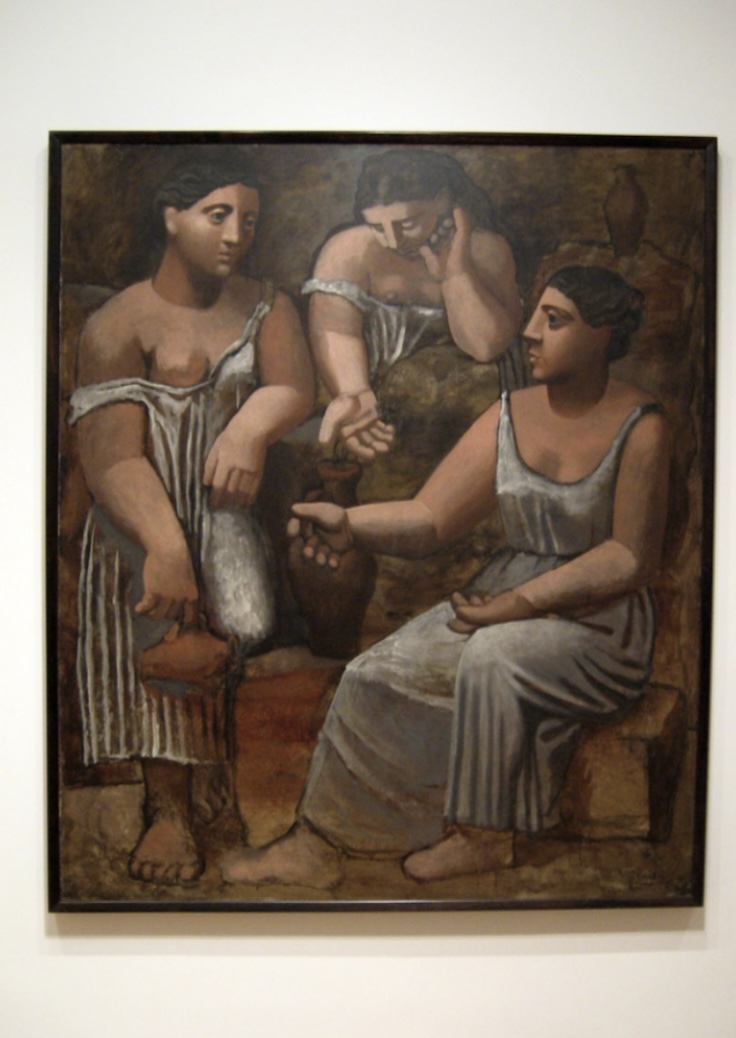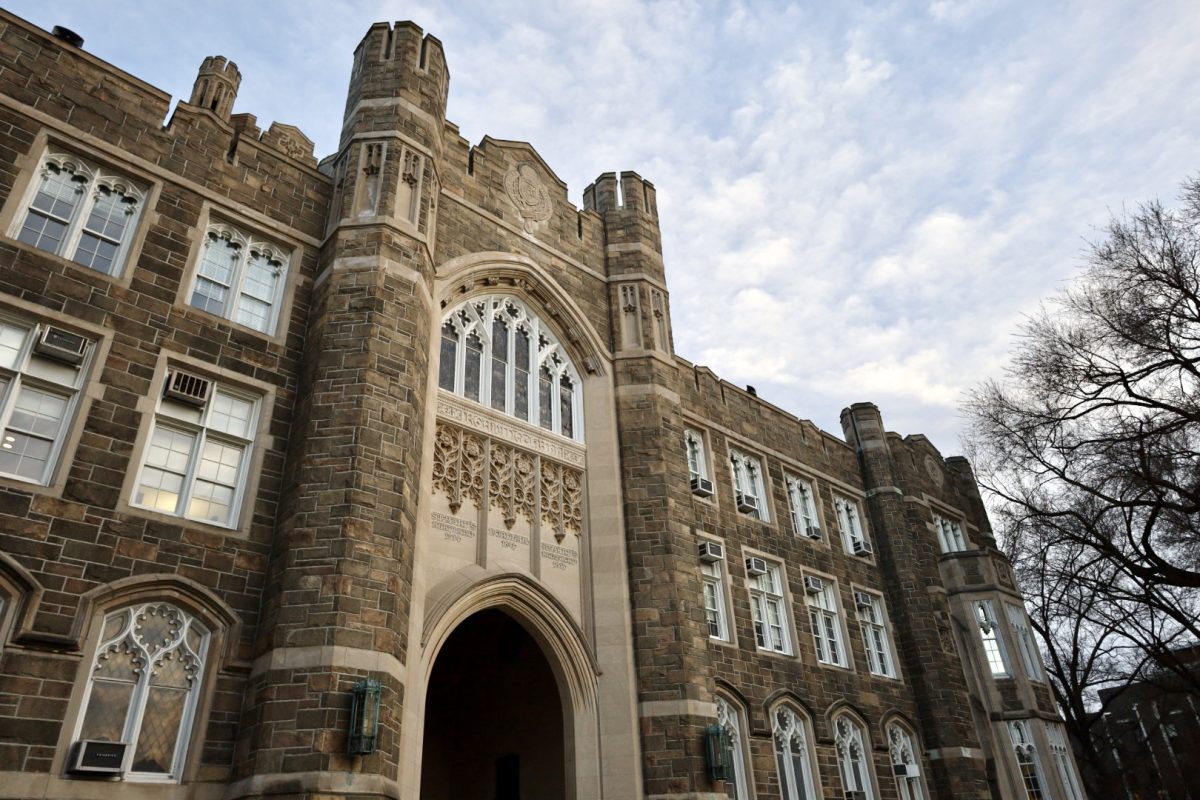Last Friday, I had the opportunity to visit the Museum of Modern Art (MoMA) and fully immerse myself in its latest exhibit, “Picasso in Fontainebleau,” which aims to explore the ideas and brilliance of Picasso’s summer of 1921 in Fontainebleau, France.
As I made my way to the third floor of the Edward Steichen Galleries, I found myself surrounded by a garage-like space meant to reproduce the setting in which Picasso had painted. The exhibit aimed to showcase the summer Picasso had spent with his wife and newborn son and really bridge the gap between his family life and illustrations. The results of this summer fervently spent painting were his production of “The Three Musicians,” a bright and vibrant abstract piece utilizing cubism, as well as “Three Women at the Spring,” a decidedly more dull use of color and realistic approach. While these two paintings look vastly different, they were painted within mere weeks of each other, offering a firsthand glimpse into Picasso’s summer.
In the small room with four large paintings, two copies of each, at about 7-feet tall, towered over myself and the other guests. The reproduction of the garage where Picasso worked, with the key paintings hanging as they would have in 1921, added a layer of authenticity and transported me back to the heart of the artist’s creative process. The beautiful drawings of the rented house and gardens in Fontainebleau, with shutters askew and vines covering the walls, offered a glance into the artist’s intimate connection with his surroundings. I found it fascinating how the exhibit attempted to juxtapose the two paintings by hanging them side by side, illustrating Picasso’s ability to simultaneously delve into cubism and classical representation on the same wall.
As I moved through the exhibition, the sharp distinctions between the abstracted musicians and the more traditional representation of women became apparent. As his summer and the dates on the paintings progressed, I was able to see a visible shift in Picasso’s mental health as he began exploring with brighter colors and cubism and really came into his own as an artist. The dichotomies extended beyond the visual elements, touching upon themes of the male and female, outward and inward focus and gathering and consuming versus processing and performing.
The birth of Picasso’s son, Paulo, a few months earlier seemed to cast a profound influence on his thoughts about gender roles, power dynamics and family life. It sheds light on his simultaneous exploration of Cubism and classicism, challenging the prevailing notions of artistic progress and categorization to balance both modernity and tradition. The contrast between the huge canvases of “Three Musicians” and “Three Women” at the spring shows the revolutionary nature of his work, as he struggled in the gap between talent and insanity, struggling with his own mental health and his newfound role as a father.
As I traversed the gallery spaces, I couldn’t help but reflect on the complexities of Picasso’s life during that summer, navigating the clash of domestic responsibility and the imperative need to create. As a writer myself, I was able to understand his struggle of balancing his own style with a more conventional one, experimenting with a fusion of the two.
“Picasso in Fontainebleau” at the MoMA is more than a display of paintings; it is a curated journey through the mind of an artistic genius. The exhibition transcends traditional boundaries, inviting viewers to explore the interconnectedness of Picasso’s life, art and the cultural milieu of Fontainebleau in 1921 through putting yourself in his shoes. It also serves as a testament to the enduring relevance of Picasso’s work, sparking conversations that transcend time and place and allowing everyone to connect with his work.
As I departed from the MoMA on Friday evening, I carried with me a newfound appreciation for Picasso’s summer spent in the south of France. The exhibition not only celebrated the genius of a renowned artist, but also invited contemplation on the broader themes of creativity, identity and the perpetual balance between tradition and innovation. “Picasso in Fontainebleau” is a must-see, offering a glimpse into the mind of an artist who dared to redefine the boundaries of art.
The first Friday of every month, the MoMA partners with Uniqlo to offer free admission to New York residents and college students, so make sure to take advantage of this opportunity to see this wonderful and immersive exhibit. It was a Friday well spent, and I emerged with a deeper appreciation for the complexities that define both art and life.







































































































































































































